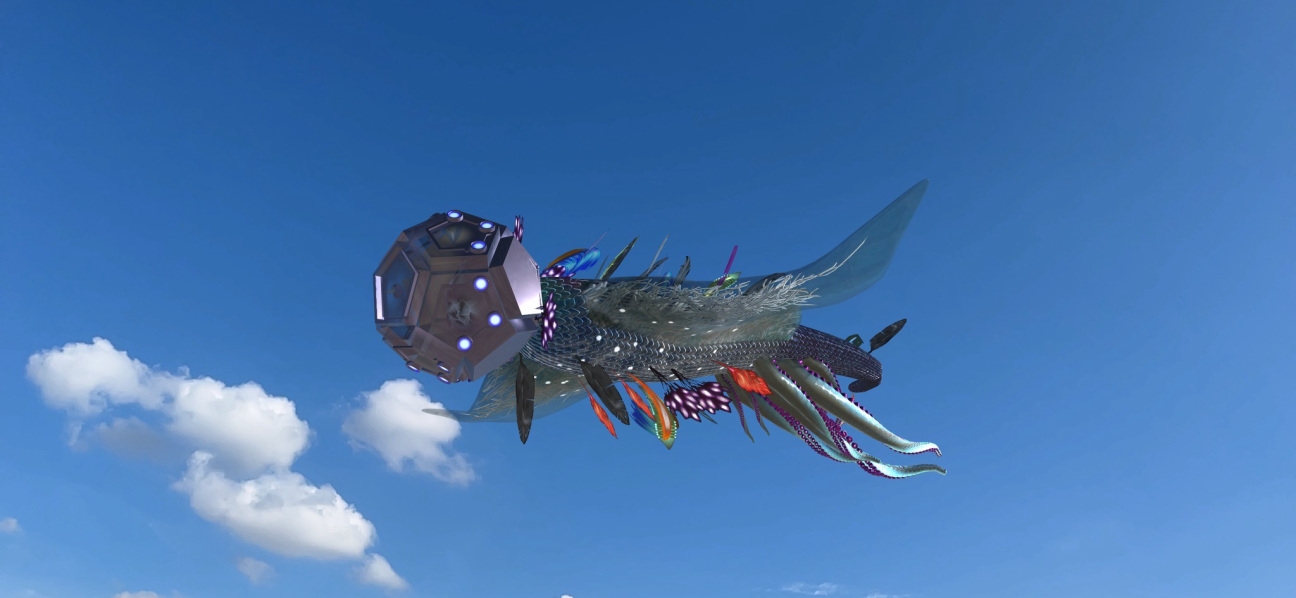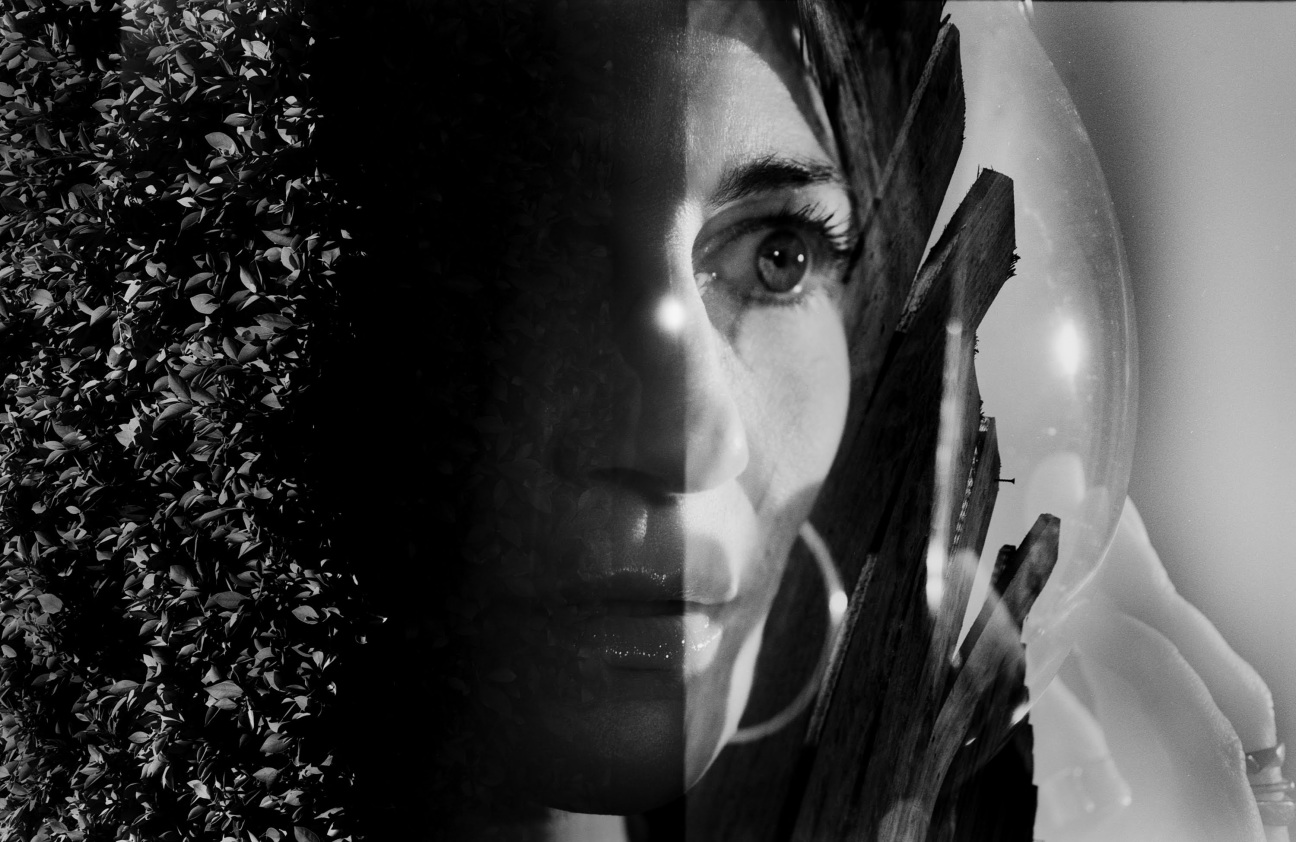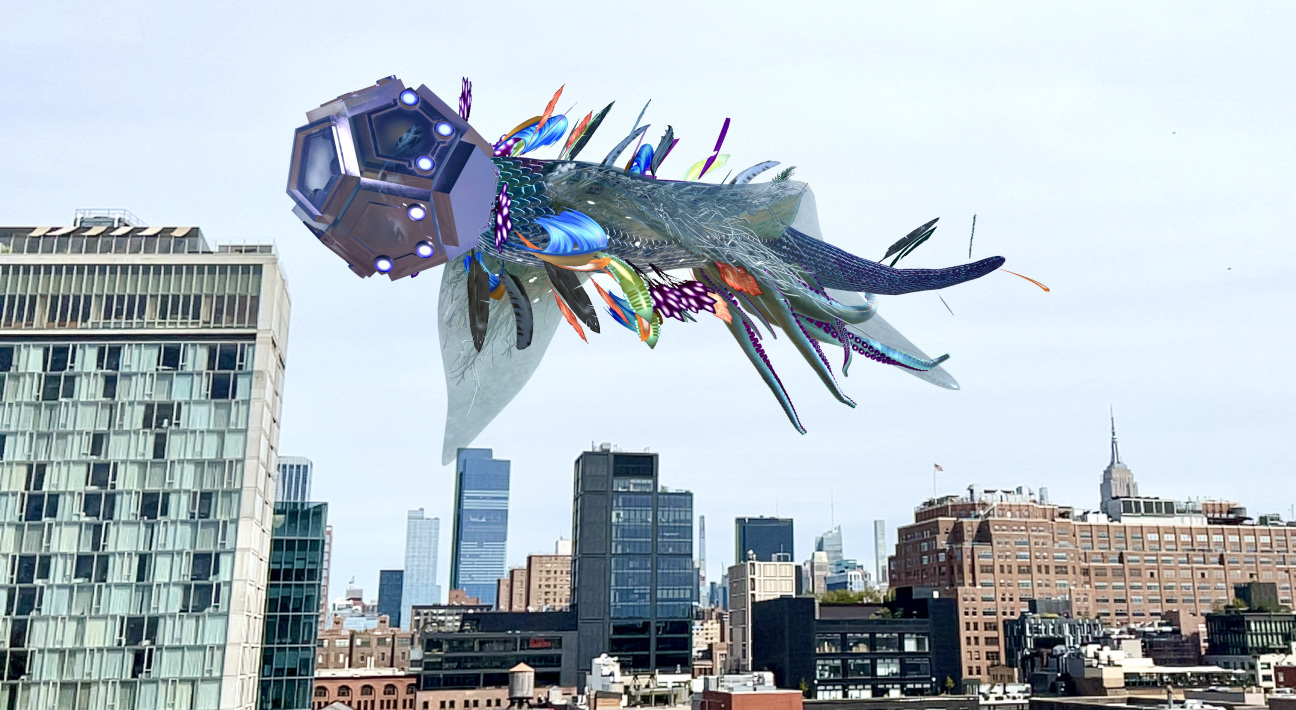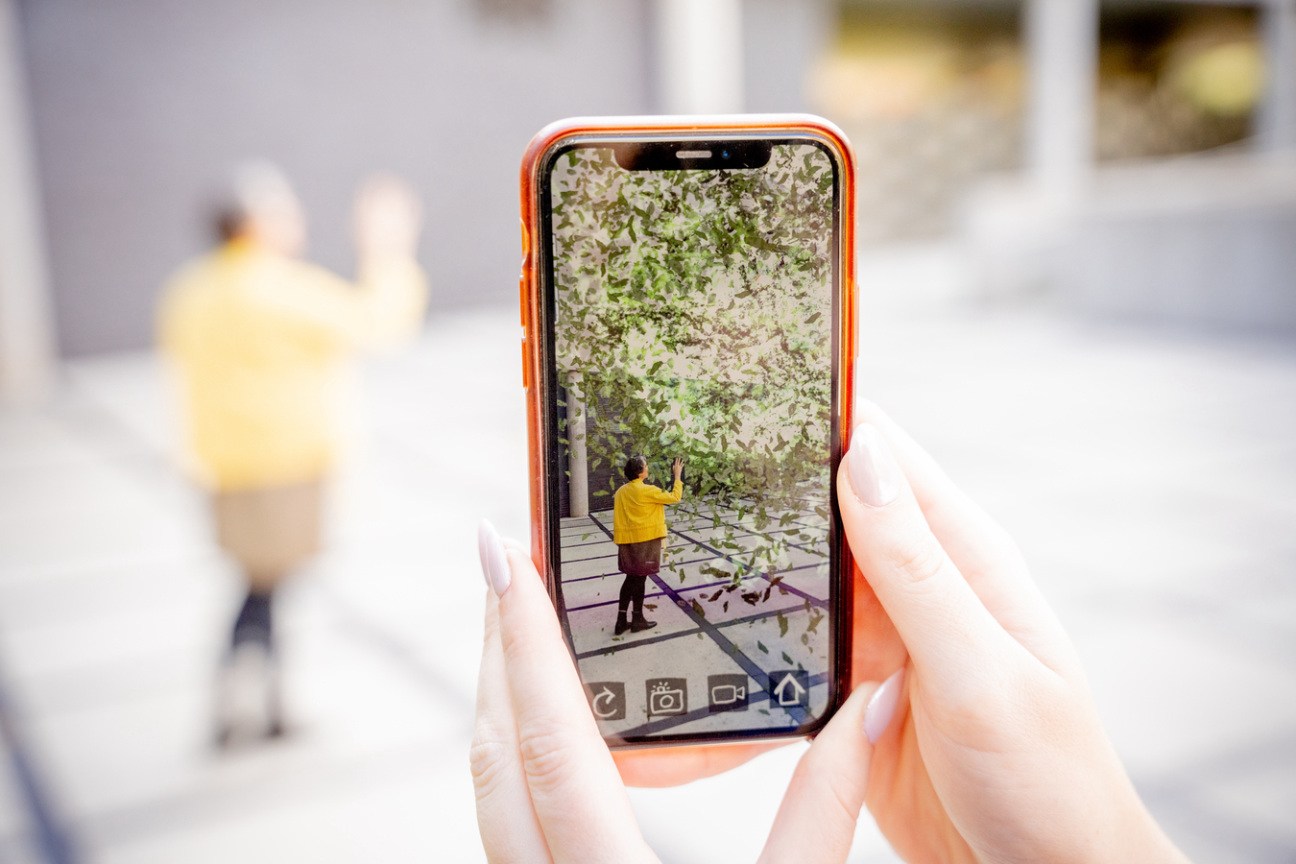
New York’s skyline doesn’t boast dragons, pegasuses, or any other mythical flying creatures. But if you visit the Whitney Museum, you might spy CENTO, a fantastical airborne being with cephalopod tendrils, rubbery manta ray wings, a machine pentagon for a head, a serpentine body, and a mycelium belly glowing with neon feathers.
According to its maker, the new media artist Nancy Baker Cahill, CENTO, 2023, is a “bio-engineered future creature,” a transspeciated being with techno-organic parts to ensure its survival in an unseen, toxic environment. Its alternate universe exists in AR (augmented reality), accessible through the artist’s 4th Wall app, and its immersive habitat is on view on the 6th floor balcony LED screen.

I recently spoke with Baker Cahill about the initiative, along with other works, while she was at home in Los Angeles, waiting for a file to render—one of the more mundane, day-to-day tasks for an artist working with digital media.
“CENTO is an experimental project of ecological imagination to address the collaboration required to survive or even adapt to climate collapse,” she said. Pull up the app wherever you are, and you can festoon CENTO with protective feathers in real time. “We co-create it and ensure its survival by adding feathers with their own distinct properties to ensure evolutionary fitness,” she added. Over time, CENTO’s polychromatic plumage becomes “computationally too heavy” if too many feathers are added, so it “molts” digitally.

I keep going back to the 4th Wall app, whether I’m sitting at home, riding the subway, or waiting for an appointment. Oddly, I find myself thinking about CENTO’s vulnerability, that it needs me—or maybe I need it? CENTO calls for a caring commitment with our “more-than-human” kin, in the words of ecofeminist Donna Haraway.
While the creature has a hopeful air, its inspiration points to a darker vision. A self-described “voracious reader,” Baker Cahill told me that the inspiration for CENTO springs from, among other books, Jeff VanderMeer’s 2017 novella The Strange Bird. In this work of New Weird fiction, a bird-like techno-creature struggles in a nightmarish landscape, damaged by numerous environmental and bio-tech disasters. Even the titular character refers to this world as “hell.”

Ecological collapse takes on an equally important position in “Through Lines,” the artist’s first retrospective, held at the Georgia Museum of Art. In the museum’s sculpture garden, the seductively hypnotic AR work Margin of Error, 2019, swirls like a tornado full of holographic shards of toxic debris and detritus. An earlier version of the work debuted at the 2019 Desert X festival above the rapidly disappearing Salton Sea, a reminder of the effects of the Anthropocene in the here-and-now.
For Baker Cahill, climate crisis is not a distant future. Living in California, the artist says it’s inescapable: “You live with it. You breathe it.” Her AR works make that known as a vivid responsibility, all while keeping our fellow and future kin in mind.
“Nancy Baker Cahill: Through Lines” is on view through May 19, 2024 at the Georgia Museum of Art in Athens, Georgia. “CENTO” is on view at the Whitney Museum in New York and on the 4th Wall app.










 in your life?
in your life?

